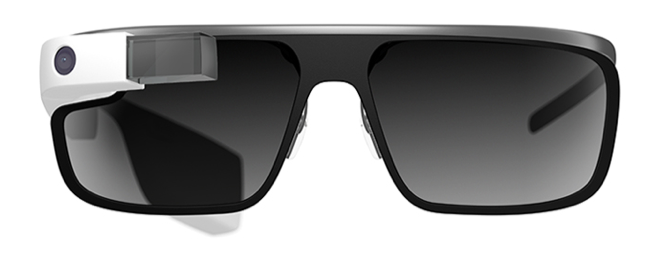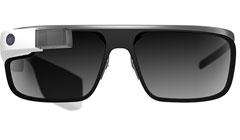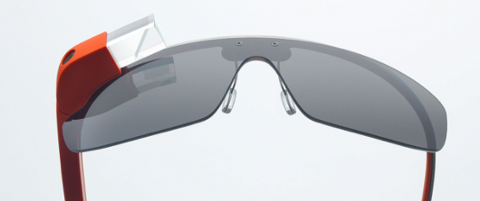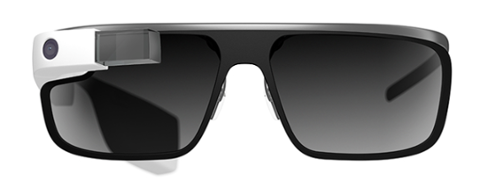
Have $1,500 handy? Interested in strapping a computer to your face? The Google Glass Explorer program is now open to the public. Google unveiled the Explorer program last year, but actually obtaining a Google Glass unit required an invite (as well as that $1,500). This April, Google opened up the program a little more with a one-day sale, and customers quickly snatched up the limited number of units available. While Google added new features to Glass—including the ability
to snap a photo by winking—
developers began creating apps and accessories for the device, including
a tiny 3D-printed flowerpot that clips onto the frame.
Click here for jobs involving Google Glass. Now that Google Glass is (more) open to the public, the question of whether the device can prove a smartphone-sized hit is more pressing than ever. If Google can convince people that they need a pair of augmented-reality glasses, it could help accelerate the nascent wearable-electronics trend. If Google Glass ends up a marketplace failure, however, it could prove embarrassing for Google, which has promoted the technology incessantly for the past several months. Google Glass also faces significant resistance from a number of groups, including pundits and civil libertarians
who hate the idea of law-enforcement officers wearing electronics that can send a constant stream of video and audio to a government server. Jay Stanley, a senior policy analyst with the ACLU’s Speech, Privacy and Technology Project,
wrote in a blog posting last year that, as a society, we need to make choices “about the extent to which we want to allow the government to store up that data so that it has the power to hit ‘rewind’ on everybody’s lives.” In San Francisco,
bystanders have attacked individuals wearing Google Glass, which is viewed by many as an emblem of the growing tensions between that city’s technology elite and anti-gentrification protestors. Bars and venues throughout the country
have banned the use of Google Glass by customers, claiming the device’s ability to shoot video and record audio can invade others’ privacy. Legislators in West Virginia recently proposed
banning the use of Glass while driving, citing safety concerns. If that wasn’t enough, that $1,500 sticker price could also present a significant barrier to adoption. Although a third-party teardown firm recently suggested that Google Glass only costs roughly $152 in parts and labor to actually build, Google presumably sells the device at a substantial markup in order to recover at least a portion of its research and development costs, as well as position it as a “prestige item.” But that won’t pull in all those millions of people who won’t pay more than $200 for a next-generation smartphone.
Related Articles
Image: Google
 Have $1,500 handy? Interested in strapping a computer to your face? The Google Glass Explorer program is now open to the public. Google unveiled the Explorer program last year, but actually obtaining a Google Glass unit required an invite (as well as that $1,500). This April, Google opened up the program a little more with a one-day sale, and customers quickly snatched up the limited number of units available. While Google added new features to Glass—including the ability to snap a photo by winking—developers began creating apps and accessories for the device, including a tiny 3D-printed flowerpot that clips onto the frame. Click here for jobs involving Google Glass. Now that Google Glass is (more) open to the public, the question of whether the device can prove a smartphone-sized hit is more pressing than ever. If Google can convince people that they need a pair of augmented-reality glasses, it could help accelerate the nascent wearable-electronics trend. If Google Glass ends up a marketplace failure, however, it could prove embarrassing for Google, which has promoted the technology incessantly for the past several months. Google Glass also faces significant resistance from a number of groups, including pundits and civil libertarians who hate the idea of law-enforcement officers wearing electronics that can send a constant stream of video and audio to a government server. Jay Stanley, a senior policy analyst with the ACLU’s Speech, Privacy and Technology Project, wrote in a blog posting last year that, as a society, we need to make choices “about the extent to which we want to allow the government to store up that data so that it has the power to hit ‘rewind’ on everybody’s lives.” In San Francisco, bystanders have attacked individuals wearing Google Glass, which is viewed by many as an emblem of the growing tensions between that city’s technology elite and anti-gentrification protestors. Bars and venues throughout the country have banned the use of Google Glass by customers, claiming the device’s ability to shoot video and record audio can invade others’ privacy. Legislators in West Virginia recently proposed banning the use of Glass while driving, citing safety concerns. If that wasn’t enough, that $1,500 sticker price could also present a significant barrier to adoption. Although a third-party teardown firm recently suggested that Google Glass only costs roughly $152 in parts and labor to actually build, Google presumably sells the device at a substantial markup in order to recover at least a portion of its research and development costs, as well as position it as a “prestige item.” But that won’t pull in all those millions of people who won’t pay more than $200 for a next-generation smartphone.
Have $1,500 handy? Interested in strapping a computer to your face? The Google Glass Explorer program is now open to the public. Google unveiled the Explorer program last year, but actually obtaining a Google Glass unit required an invite (as well as that $1,500). This April, Google opened up the program a little more with a one-day sale, and customers quickly snatched up the limited number of units available. While Google added new features to Glass—including the ability to snap a photo by winking—developers began creating apps and accessories for the device, including a tiny 3D-printed flowerpot that clips onto the frame. Click here for jobs involving Google Glass. Now that Google Glass is (more) open to the public, the question of whether the device can prove a smartphone-sized hit is more pressing than ever. If Google can convince people that they need a pair of augmented-reality glasses, it could help accelerate the nascent wearable-electronics trend. If Google Glass ends up a marketplace failure, however, it could prove embarrassing for Google, which has promoted the technology incessantly for the past several months. Google Glass also faces significant resistance from a number of groups, including pundits and civil libertarians who hate the idea of law-enforcement officers wearing electronics that can send a constant stream of video and audio to a government server. Jay Stanley, a senior policy analyst with the ACLU’s Speech, Privacy and Technology Project, wrote in a blog posting last year that, as a society, we need to make choices “about the extent to which we want to allow the government to store up that data so that it has the power to hit ‘rewind’ on everybody’s lives.” In San Francisco, bystanders have attacked individuals wearing Google Glass, which is viewed by many as an emblem of the growing tensions between that city’s technology elite and anti-gentrification protestors. Bars and venues throughout the country have banned the use of Google Glass by customers, claiming the device’s ability to shoot video and record audio can invade others’ privacy. Legislators in West Virginia recently proposed banning the use of Glass while driving, citing safety concerns. If that wasn’t enough, that $1,500 sticker price could also present a significant barrier to adoption. Although a third-party teardown firm recently suggested that Google Glass only costs roughly $152 in parts and labor to actually build, Google presumably sells the device at a substantial markup in order to recover at least a portion of its research and development costs, as well as position it as a “prestige item.” But that won’t pull in all those millions of people who won’t pay more than $200 for a next-generation smartphone.



